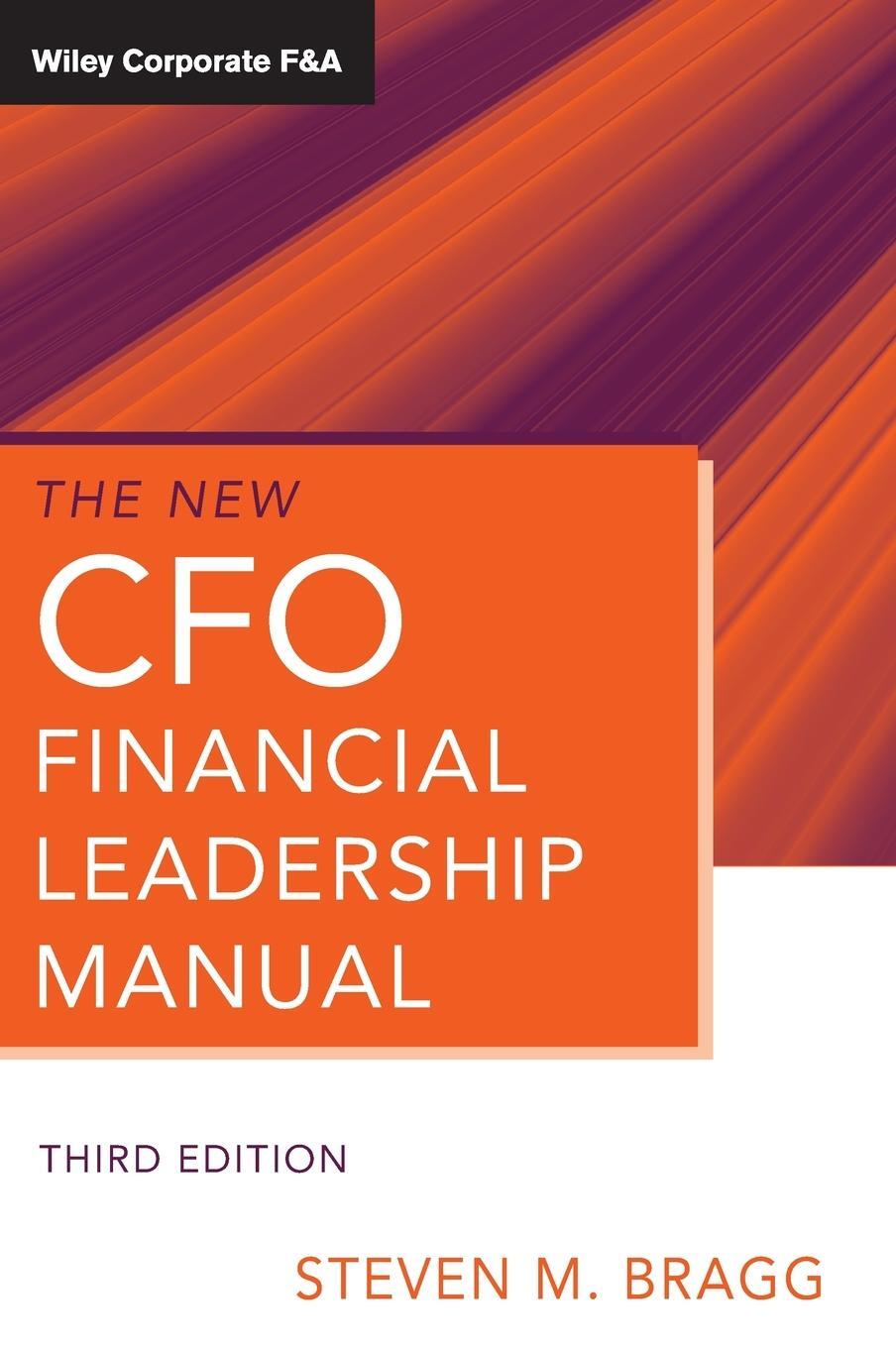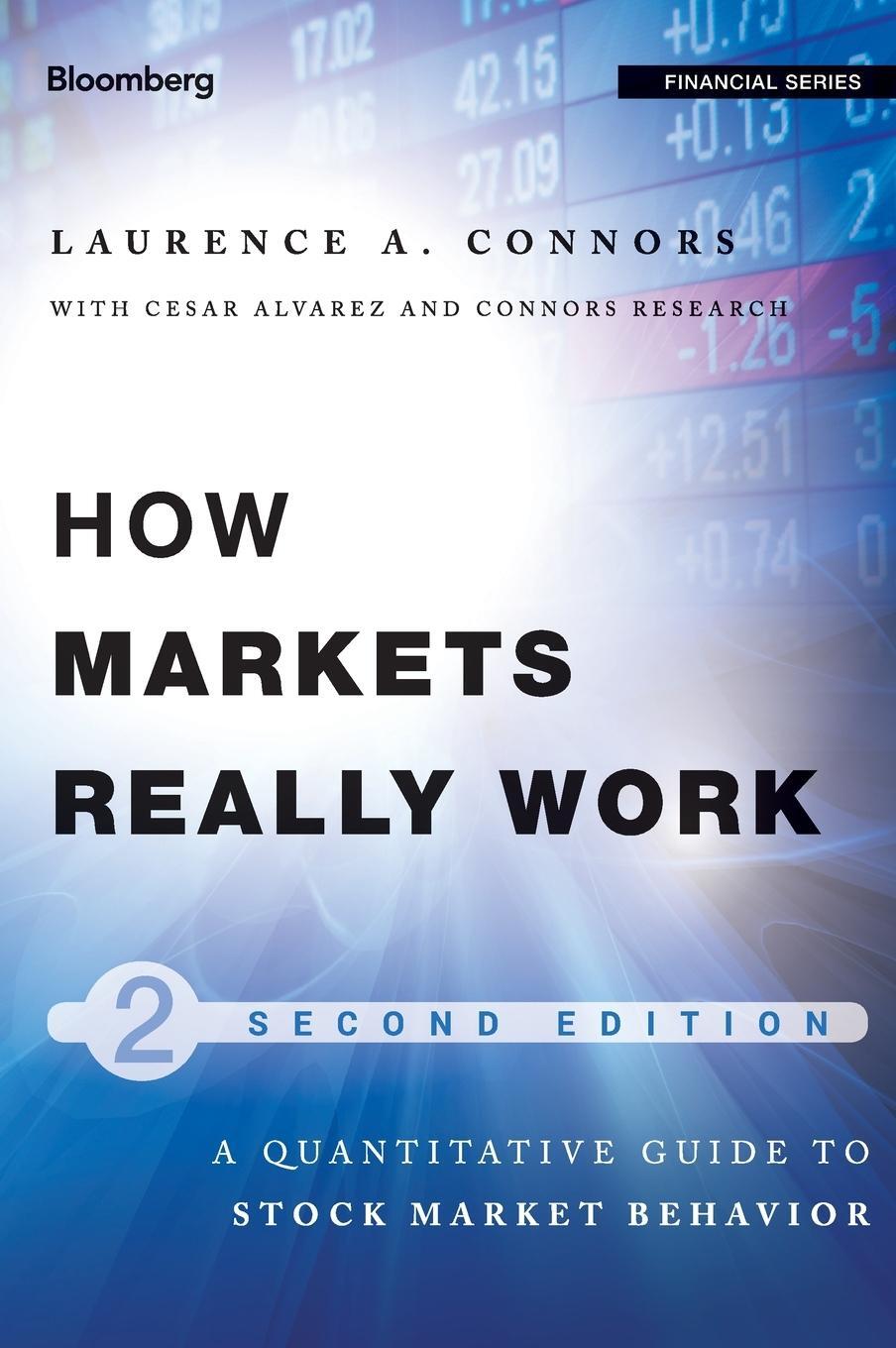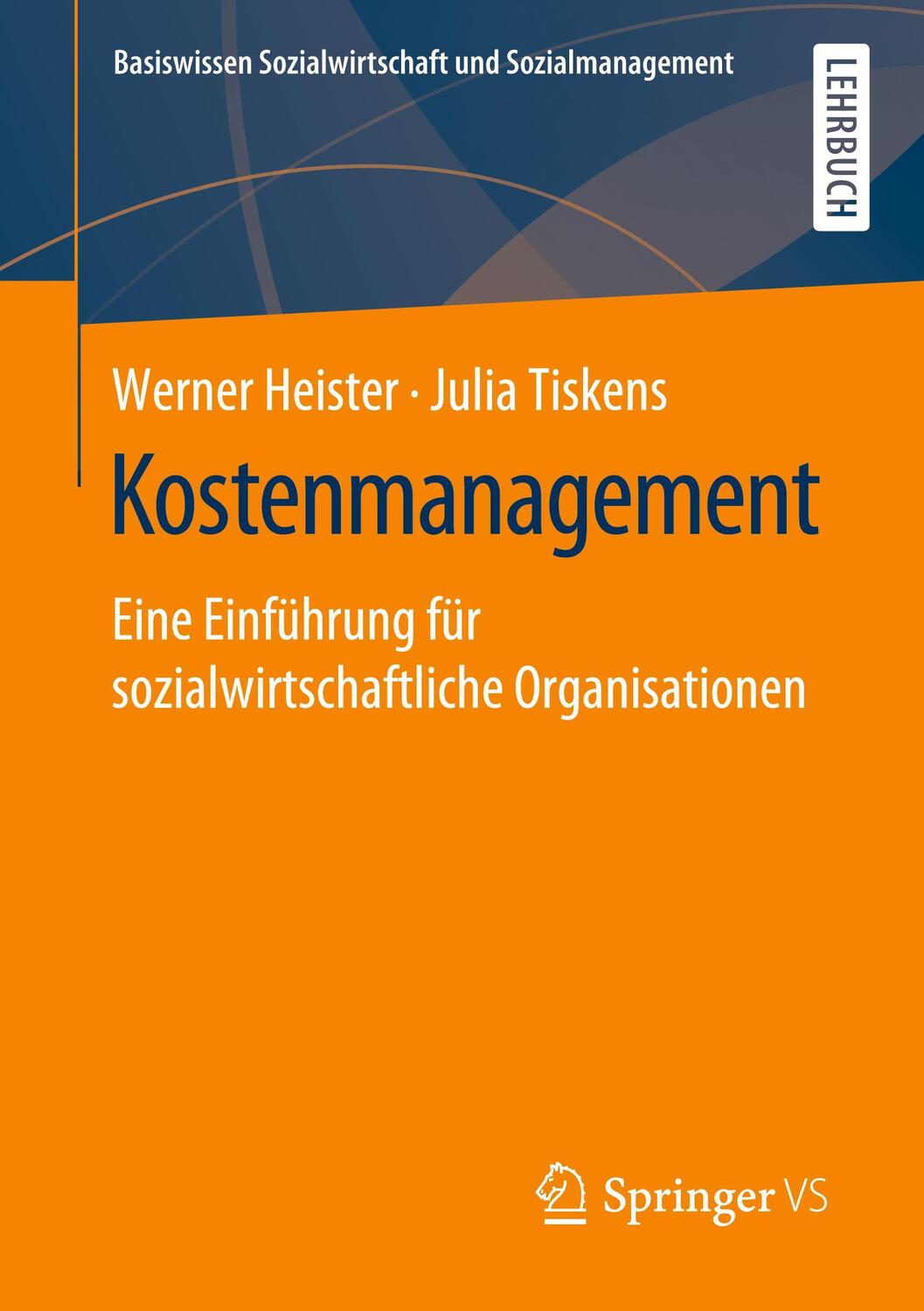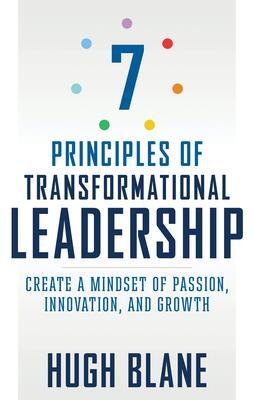Dekorationsartikel gehören nicht zum Leistungsumfang.
Sprache:
Englisch
130,50 €*
Versandkostenfrei per Post / DHL
Aktuell nicht verfügbar
Kategorien:
Beschreibung
The comprehensive guide for CFOs who need an overview of leadership basics from strategies to management improvement tips
Filled with pragmatic insights and proactive strategies, The New CFO Financial Leadership Manual, Third Edition is destined to become your essential desktop companion. This thorough guidebook is filled with best practices to help you, as CFO, to improve efficiency, mitigate risks, and keep your organization competitive.
* Includes updated information on the relationship of the CFO with the Treasurer, registration statements and Fedwire payments, acquisitions integration, legal types of acquisitions, and government regulations
* Contains control flowcharts for the main accounting cycles
* Provides new chapters on Investor Relations and Risk Management for Foreign Exchange and Interest Rates
* Features an itemized list of the key tasks every new CFO should complete when first entering the position, a checklist of 100 performance measures, and a detailed discussion of employee compensation plans
The reference CFOs and other financial managers can turn to for quick answers to questions they have as well as to help them plan their financial strategy, The New CFO Financial Leadership Manual, Third Edition is mandatory reading for every CFO wanting to play a strategic role in their organization.
Filled with pragmatic insights and proactive strategies, The New CFO Financial Leadership Manual, Third Edition is destined to become your essential desktop companion. This thorough guidebook is filled with best practices to help you, as CFO, to improve efficiency, mitigate risks, and keep your organization competitive.
* Includes updated information on the relationship of the CFO with the Treasurer, registration statements and Fedwire payments, acquisitions integration, legal types of acquisitions, and government regulations
* Contains control flowcharts for the main accounting cycles
* Provides new chapters on Investor Relations and Risk Management for Foreign Exchange and Interest Rates
* Features an itemized list of the key tasks every new CFO should complete when first entering the position, a checklist of 100 performance measures, and a detailed discussion of employee compensation plans
The reference CFOs and other financial managers can turn to for quick answers to questions they have as well as to help them plan their financial strategy, The New CFO Financial Leadership Manual, Third Edition is mandatory reading for every CFO wanting to play a strategic role in their organization.
The comprehensive guide for CFOs who need an overview of leadership basics from strategies to management improvement tips
Filled with pragmatic insights and proactive strategies, The New CFO Financial Leadership Manual, Third Edition is destined to become your essential desktop companion. This thorough guidebook is filled with best practices to help you, as CFO, to improve efficiency, mitigate risks, and keep your organization competitive.
* Includes updated information on the relationship of the CFO with the Treasurer, registration statements and Fedwire payments, acquisitions integration, legal types of acquisitions, and government regulations
* Contains control flowcharts for the main accounting cycles
* Provides new chapters on Investor Relations and Risk Management for Foreign Exchange and Interest Rates
* Features an itemized list of the key tasks every new CFO should complete when first entering the position, a checklist of 100 performance measures, and a detailed discussion of employee compensation plans
The reference CFOs and other financial managers can turn to for quick answers to questions they have as well as to help them plan their financial strategy, The New CFO Financial Leadership Manual, Third Edition is mandatory reading for every CFO wanting to play a strategic role in their organization.
Filled with pragmatic insights and proactive strategies, The New CFO Financial Leadership Manual, Third Edition is destined to become your essential desktop companion. This thorough guidebook is filled with best practices to help you, as CFO, to improve efficiency, mitigate risks, and keep your organization competitive.
* Includes updated information on the relationship of the CFO with the Treasurer, registration statements and Fedwire payments, acquisitions integration, legal types of acquisitions, and government regulations
* Contains control flowcharts for the main accounting cycles
* Provides new chapters on Investor Relations and Risk Management for Foreign Exchange and Interest Rates
* Features an itemized list of the key tasks every new CFO should complete when first entering the position, a checklist of 100 performance measures, and a detailed discussion of employee compensation plans
The reference CFOs and other financial managers can turn to for quick answers to questions they have as well as to help them plan their financial strategy, The New CFO Financial Leadership Manual, Third Edition is mandatory reading for every CFO wanting to play a strategic role in their organization.
Über den Autor
STEVEN M. BRAGG, CPA, has been the chief financial officer or controller of four companies, as well as a consulting manager at Ernst & Young and auditor at Deloitte. He is the author of over forty books primarily targeted toward controllers and their needs. He received a master's degree in finance from Bentley College, an MBA from Babson College, and a bachelor's degree in economics from the University of Maine. He is also the author of Accounting Best Practices and Wiley GAAP, both published by Wiley.
Inhaltsverzeichnis
Preface.
PART ONE OVERVIEW.
Chapter 1 CFO's Place in the Corporation.
First Days in the Position.
Specific CFO Responsibilities.
Overview of the Change Management Process.
Differences between the Controller and CFO Positions.
Relationship of the Controller to the CFO.
Other Direct Reports: The Treasurer.
Other Direct Reports: The Investor Relations Officer.
Summary.
Chapter 2 Financial Strategy.
Cash.
Investments.
Working Capital.
Inventory: Inventory Reduction Decision.
Fixed Assets: Lease versus Buy Decision.
Payables.
Debt.
Equity.
Products: Product Elimination Decisions.
Fixed Expenses: Step Costing Decision.
Payroll Expenses: Temporary Labor versus Permanent Staffing Decisions.
Entities: Divestiture Decisions.
Systems: When to Use Throughput Costing.
High-Volume, Low-Price Sale Decision Using Throughput Costing.
Capital Budgeting Decisions Using Throughput Costing.
Make versus Buy Decisions Using Throughput Costing.
Summary.
Chapter 3 Tax Strategy.
Accumulated Earnings Tax.
Cash Method of Accounting.
Inventory Valuation.
Mergers and Acquisitions.
Net Operating Loss Carryforwards.
Nexus.
Project Costing.
S Corporation.
Sales and Use Taxes.
Transfer Pricing.
Unemployment Taxes.
Summary.
Chapter 4 Information Technology Strategy.
Reasons for Devising an Information Technology Strategy.
Developing the Information Technology Strategy.
Technical Strategies.
Specific Applications.
Summary.
PART TWO ACCOUNTING.
Chapter 5 Performance Measurement Systems.
Creating a Performance Measurement System.
Asset Utilization Measurements.
Operating Performance Measurements.
Cash-Flow Measurements.
Liquidity Measurements.
Solvency Measurements.
Return on Investment Measurements.
Market Performance Measurements.
Summary.
Chapter 6 Control Systems.
Need for Control Systems.
Types of Fraud.
Key Controls.
When to Eliminate Controls.
Summary.
Chapter 7 Audit Function.
Composition of the Audit Committee.
Role of the Audit Committee.
Purpose of the External Auditors.
Dealing With External Auditors.
Impact of the Sarbanes-Oxley Act on the Audit Function.
Role of the Internal Audit Function.
Managing the Internal Audit Function.
Summary.
PART THREE FINANCIAL ANALYSIS.
Chapter 8 Cost of Capital.
Components.
Calculating the Cost of Debt.
Calculating the Cost of Equity.
Calculating the Weighted Cost of Capital.
Incremental Cost of Capital.
Using the Cost of Capital in Special Situations.
Modifying the Cost of Capital to Enhance Shareholder Value.
Strategize Cost of Capital Reductions.
Summary.
Chapter 9 Capital Budgeting.
Hurdle Rate.
Payback Period.
Net Present Value.
Internal Rate of Return.
Throughput-Based Capital Budgeting.
Problems with the Capital Budget Approval Process.
Cash Flow Modeling Issues.
Funding Decisions for Research and Development Projects.
Capital Investment Proposal Form.
Post-Completion Project Analysis.
Summary.
Chapter 10 Other Financial Analysis Topics.
Risk Analysis.
Capacity Utilization.
Breakeven Analysis.
Business Cycle Forecasting.
Summary.
PART FOUR FUNDING.
Chapter 11 CASH MANAGEMENT AND CONSOLIDATION.
Cash Forecasting Model.
Information Sources for the Cash Forecast.
Measuring Cash Forecast Accuracy.
Cash Forecasting Automation.
Cash Concentration Overview.
Physical Sweeping.
Notional Pooling.
Comparison of Account Sweeping and Notional Pooling.
Cash Management Controls.
Summary.
Chapter 12 Investing Excess Funds.
Investment Criteria.
Investment Restrictions.
Investment Options.
Investment Strategies.
Summary.
Chapter 13 Obtaining Debt Financing.
Management of Financing Issues.
Bank Relations.
Accounts Payable Payment Delay.
Accounts Receivable Collection Acceleration.
Credit Cards.
Employee Trade-Offs.
Factoring.
Field Warehouse Financing.
Floor Planning.
Inventory Reduction.
Lease.
Line of Credit.
Loans.
Merchant Card Advances.
Preferred Stock.
Sale and Leaseback.
Summary.
Chapter 14 Obtaining Equity Financing.
Types of Stock.
Private Placement of Stock.
Layout of the Offering Memorandum.
Establishing a Valuation for the Offering Memorandum.
Swapping Stock for Expenses.
Swapping Stock for Cash.
Stock Warrants.
Stock Subscriptions.
Private Investment in Public Equity.
Buying Back Shares.
Rule 144.
Rule 10b5-1.
Summary.
PART FIVE PUBLICLY HELD COMPANY.
Chapter 15 Initial Public Offering.
Reasons to Go Public.
Reasons Not to Go Public.
Cost of an IPO.
Preparing for the IPO.
Finding an Underwriter.
Registering for and Completing the IPO.
Alternatives for Selling Securities.
Trading on an Exchange.
American Stock Exchange.
Overview of the NASDAQ.
New York Stock Exchange.
Comparing the Stock Exchanges.
Over-the-Counter Stocks.
Summary.
Chapter 16 Reports to the Securities and Exchange Commission.
Overview.
Form 8-K.
Form 10-Q and Form 10-K.
Form S-1.
Form S-3.
Form S-8.
Shelf Registration.
Declaring a Registration Statement Effective.
Reporting Insider Securities Ownership and Trading.
EDGAR Filing Systems.
Fedwire Payments.
Summary.
Chapter 17 Investment Community.
Introduction.
Analyst's Perspective.
Finding the Right Analyst.
Sell Side: Analysts.
Negative Analyst Report.
Sell Side: Brokers.
Sell Side: Investment Bankers.
Sell Side: Investor Relations Specialists.
Buy Side: Types of Investors.
Buy Side Institutional Investors.
Buy Side: Individual Investors.
Buy Side: Presentations to Investors.
Summary.
Chapter 18 Taking a Company Private.
Going Private Transaction.
Rule 13E-3.
Filling Out Schedule 13E-3.
Form 15.
300 Shareholder Limit.
Summary.
PART SIX MANAGEMENT.
Chapter 19 Risk Management-General Concepts.
Risk Management Policies.
Risk Management Planning.
Manager of Risk Management.
Risk Management Procedures.
Types of Insurance Companies.
Evaluating the Health of an Insurance Carrier.
Claims Administration.
Insurance Files.
Annual Risk Management Report.
Summary.
Chapter 20 Risk Management: Foreign Exchange.
Foreign Exchange Quote Terminology.
Nature of Foreign Exchange Risk.
Data Collection for Foreign Exchange Risk Management.
Foreign Exchange Hedging Strategies.
Accept the Risk.
Insist on Home Currency Payment.
Currency Surcharges.
Get Paid on Time.
Foreign Currency Loans.
Sourcing Changes.
Foreign Currency Accounts.
Unilateral, Bilateral and Multilateral Netting Arrangements.
Forward Exchange Contracts.
Currency Futures.
Currency Options.
Currency Swaps.
Proxy Hedging.
Summary.
Chapter 21 Outsourcing the Accounting and Finance Functions.
Advantages and Disadvantages of Outsourcing.
Contractual Issues.
Transition Issues.
Controlling Supplier Performance.
Measuring Outsourced Activities.
Managing Suppliers.
Dropping Suppliers.
Summary.
Chapter 22 Mergers and Acquisitions.
Evaluating Acquisition Targets.
Complexity Analysis.
Evaluate Acquisition Targets with Alliances.
Valuing an Acquisition Target.
Alternative Valuation Methods.
Control Premium.
Synergy Gains.
Discounted Cash Flow (DCF) Model.
Constructing Cash Flow Scenarios.
Cash Flow Adjusting Factors.
Earnout.
Qualitative Factors.
Which Valuation Method is Best?
Method of Payment.
Types of Acquisitions.
Tax Implications of a Acquisition.
Asset Acquisition.
Type "A" Reorganization.
Type "B" Reorganization.
Type "C" Reorganization.
Type "D" Reorganization.
Triangular Merger.
Reverse Triangular Merger.
Terms of the Acquisition Agreement.
When to Use an Investment Banker.
Summary.
PART SEVEN OTHER TOPICS.
Chapter 23 Employee Compensation.
Deferred Compensation.
Life Insurance.
Stock Appreciation Rights.
Stock Options.
Restricted Stock Units.
Bonus Sliding Scale.
Cut Benefit Costs with a Captive Insurance Company.
Summary.
Chapter 24 Bankruptcy.
Applicable Bankruptcy Laws.
Players in the Bankruptcy Drama.
Creditor and Shareholder Payment Priorities.
Bankruptcy Sequence of Events.
Tax Liabilities in a Bankruptcy.
Special Bankruptcy Rules.
Bankruptcy Act of 2005.
Alternatives to Bankruptcy.
Summary.
Appendix A New CFO Checklist.
Appendix B Performance Measurement Checklist.
Appendix C Due Diligence Checklist.
About the Author.
Index.
PART ONE OVERVIEW.
Chapter 1 CFO's Place in the Corporation.
First Days in the Position.
Specific CFO Responsibilities.
Overview of the Change Management Process.
Differences between the Controller and CFO Positions.
Relationship of the Controller to the CFO.
Other Direct Reports: The Treasurer.
Other Direct Reports: The Investor Relations Officer.
Summary.
Chapter 2 Financial Strategy.
Cash.
Investments.
Working Capital.
Inventory: Inventory Reduction Decision.
Fixed Assets: Lease versus Buy Decision.
Payables.
Debt.
Equity.
Products: Product Elimination Decisions.
Fixed Expenses: Step Costing Decision.
Payroll Expenses: Temporary Labor versus Permanent Staffing Decisions.
Entities: Divestiture Decisions.
Systems: When to Use Throughput Costing.
High-Volume, Low-Price Sale Decision Using Throughput Costing.
Capital Budgeting Decisions Using Throughput Costing.
Make versus Buy Decisions Using Throughput Costing.
Summary.
Chapter 3 Tax Strategy.
Accumulated Earnings Tax.
Cash Method of Accounting.
Inventory Valuation.
Mergers and Acquisitions.
Net Operating Loss Carryforwards.
Nexus.
Project Costing.
S Corporation.
Sales and Use Taxes.
Transfer Pricing.
Unemployment Taxes.
Summary.
Chapter 4 Information Technology Strategy.
Reasons for Devising an Information Technology Strategy.
Developing the Information Technology Strategy.
Technical Strategies.
Specific Applications.
Summary.
PART TWO ACCOUNTING.
Chapter 5 Performance Measurement Systems.
Creating a Performance Measurement System.
Asset Utilization Measurements.
Operating Performance Measurements.
Cash-Flow Measurements.
Liquidity Measurements.
Solvency Measurements.
Return on Investment Measurements.
Market Performance Measurements.
Summary.
Chapter 6 Control Systems.
Need for Control Systems.
Types of Fraud.
Key Controls.
When to Eliminate Controls.
Summary.
Chapter 7 Audit Function.
Composition of the Audit Committee.
Role of the Audit Committee.
Purpose of the External Auditors.
Dealing With External Auditors.
Impact of the Sarbanes-Oxley Act on the Audit Function.
Role of the Internal Audit Function.
Managing the Internal Audit Function.
Summary.
PART THREE FINANCIAL ANALYSIS.
Chapter 8 Cost of Capital.
Components.
Calculating the Cost of Debt.
Calculating the Cost of Equity.
Calculating the Weighted Cost of Capital.
Incremental Cost of Capital.
Using the Cost of Capital in Special Situations.
Modifying the Cost of Capital to Enhance Shareholder Value.
Strategize Cost of Capital Reductions.
Summary.
Chapter 9 Capital Budgeting.
Hurdle Rate.
Payback Period.
Net Present Value.
Internal Rate of Return.
Throughput-Based Capital Budgeting.
Problems with the Capital Budget Approval Process.
Cash Flow Modeling Issues.
Funding Decisions for Research and Development Projects.
Capital Investment Proposal Form.
Post-Completion Project Analysis.
Summary.
Chapter 10 Other Financial Analysis Topics.
Risk Analysis.
Capacity Utilization.
Breakeven Analysis.
Business Cycle Forecasting.
Summary.
PART FOUR FUNDING.
Chapter 11 CASH MANAGEMENT AND CONSOLIDATION.
Cash Forecasting Model.
Information Sources for the Cash Forecast.
Measuring Cash Forecast Accuracy.
Cash Forecasting Automation.
Cash Concentration Overview.
Physical Sweeping.
Notional Pooling.
Comparison of Account Sweeping and Notional Pooling.
Cash Management Controls.
Summary.
Chapter 12 Investing Excess Funds.
Investment Criteria.
Investment Restrictions.
Investment Options.
Investment Strategies.
Summary.
Chapter 13 Obtaining Debt Financing.
Management of Financing Issues.
Bank Relations.
Accounts Payable Payment Delay.
Accounts Receivable Collection Acceleration.
Credit Cards.
Employee Trade-Offs.
Factoring.
Field Warehouse Financing.
Floor Planning.
Inventory Reduction.
Lease.
Line of Credit.
Loans.
Merchant Card Advances.
Preferred Stock.
Sale and Leaseback.
Summary.
Chapter 14 Obtaining Equity Financing.
Types of Stock.
Private Placement of Stock.
Layout of the Offering Memorandum.
Establishing a Valuation for the Offering Memorandum.
Swapping Stock for Expenses.
Swapping Stock for Cash.
Stock Warrants.
Stock Subscriptions.
Private Investment in Public Equity.
Buying Back Shares.
Rule 144.
Rule 10b5-1.
Summary.
PART FIVE PUBLICLY HELD COMPANY.
Chapter 15 Initial Public Offering.
Reasons to Go Public.
Reasons Not to Go Public.
Cost of an IPO.
Preparing for the IPO.
Finding an Underwriter.
Registering for and Completing the IPO.
Alternatives for Selling Securities.
Trading on an Exchange.
American Stock Exchange.
Overview of the NASDAQ.
New York Stock Exchange.
Comparing the Stock Exchanges.
Over-the-Counter Stocks.
Summary.
Chapter 16 Reports to the Securities and Exchange Commission.
Overview.
Form 8-K.
Form 10-Q and Form 10-K.
Form S-1.
Form S-3.
Form S-8.
Shelf Registration.
Declaring a Registration Statement Effective.
Reporting Insider Securities Ownership and Trading.
EDGAR Filing Systems.
Fedwire Payments.
Summary.
Chapter 17 Investment Community.
Introduction.
Analyst's Perspective.
Finding the Right Analyst.
Sell Side: Analysts.
Negative Analyst Report.
Sell Side: Brokers.
Sell Side: Investment Bankers.
Sell Side: Investor Relations Specialists.
Buy Side: Types of Investors.
Buy Side Institutional Investors.
Buy Side: Individual Investors.
Buy Side: Presentations to Investors.
Summary.
Chapter 18 Taking a Company Private.
Going Private Transaction.
Rule 13E-3.
Filling Out Schedule 13E-3.
Form 15.
300 Shareholder Limit.
Summary.
PART SIX MANAGEMENT.
Chapter 19 Risk Management-General Concepts.
Risk Management Policies.
Risk Management Planning.
Manager of Risk Management.
Risk Management Procedures.
Types of Insurance Companies.
Evaluating the Health of an Insurance Carrier.
Claims Administration.
Insurance Files.
Annual Risk Management Report.
Summary.
Chapter 20 Risk Management: Foreign Exchange.
Foreign Exchange Quote Terminology.
Nature of Foreign Exchange Risk.
Data Collection for Foreign Exchange Risk Management.
Foreign Exchange Hedging Strategies.
Accept the Risk.
Insist on Home Currency Payment.
Currency Surcharges.
Get Paid on Time.
Foreign Currency Loans.
Sourcing Changes.
Foreign Currency Accounts.
Unilateral, Bilateral and Multilateral Netting Arrangements.
Forward Exchange Contracts.
Currency Futures.
Currency Options.
Currency Swaps.
Proxy Hedging.
Summary.
Chapter 21 Outsourcing the Accounting and Finance Functions.
Advantages and Disadvantages of Outsourcing.
Contractual Issues.
Transition Issues.
Controlling Supplier Performance.
Measuring Outsourced Activities.
Managing Suppliers.
Dropping Suppliers.
Summary.
Chapter 22 Mergers and Acquisitions.
Evaluating Acquisition Targets.
Complexity Analysis.
Evaluate Acquisition Targets with Alliances.
Valuing an Acquisition Target.
Alternative Valuation Methods.
Control Premium.
Synergy Gains.
Discounted Cash Flow (DCF) Model.
Constructing Cash Flow Scenarios.
Cash Flow Adjusting Factors.
Earnout.
Qualitative Factors.
Which Valuation Method is Best?
Method of Payment.
Types of Acquisitions.
Tax Implications of a Acquisition.
Asset Acquisition.
Type "A" Reorganization.
Type "B" Reorganization.
Type "C" Reorganization.
Type "D" Reorganization.
Triangular Merger.
Reverse Triangular Merger.
Terms of the Acquisition Agreement.
When to Use an Investment Banker.
Summary.
PART SEVEN OTHER TOPICS.
Chapter 23 Employee Compensation.
Deferred Compensation.
Life Insurance.
Stock Appreciation Rights.
Stock Options.
Restricted Stock Units.
Bonus Sliding Scale.
Cut Benefit Costs with a Captive Insurance Company.
Summary.
Chapter 24 Bankruptcy.
Applicable Bankruptcy Laws.
Players in the Bankruptcy Drama.
Creditor and Shareholder Payment Priorities.
Bankruptcy Sequence of Events.
Tax Liabilities in a Bankruptcy.
Special Bankruptcy Rules.
Bankruptcy Act of 2005.
Alternatives to Bankruptcy.
Summary.
Appendix A New CFO Checklist.
Appendix B Performance Measurement Checklist.
Appendix C Due Diligence Checklist.
About the Author.
Index.
Details
| Erscheinungsjahr: | 2010 |
|---|---|
| Fachbereich: | Betriebswirtschaft |
| Genre: | Wirtschaft |
| Rubrik: | Recht & Wirtschaft |
| Medium: | Buch |
| Seiten: | 512 |
| Inhalt: | 512 S. |
| ISBN-13: | 9780470882566 |
| ISBN-10: | 0470882565 |
| Sprache: | Englisch |
| Einband: | Gebunden |
| Autor: | Bragg, Steven M |
| Auflage: | 3rd edition |
| Hersteller: |
Wiley
John Wiley & Sons |
| Maße: | 260 x 183 x 31 mm |
| Von/Mit: | Steven M Bragg |
| Erscheinungsdatum: | 14.12.2010 |
| Gewicht: | 1,132 kg |
Über den Autor
STEVEN M. BRAGG, CPA, has been the chief financial officer or controller of four companies, as well as a consulting manager at Ernst & Young and auditor at Deloitte. He is the author of over forty books primarily targeted toward controllers and their needs. He received a master's degree in finance from Bentley College, an MBA from Babson College, and a bachelor's degree in economics from the University of Maine. He is also the author of Accounting Best Practices and Wiley GAAP, both published by Wiley.
Inhaltsverzeichnis
Preface.
PART ONE OVERVIEW.
Chapter 1 CFO's Place in the Corporation.
First Days in the Position.
Specific CFO Responsibilities.
Overview of the Change Management Process.
Differences between the Controller and CFO Positions.
Relationship of the Controller to the CFO.
Other Direct Reports: The Treasurer.
Other Direct Reports: The Investor Relations Officer.
Summary.
Chapter 2 Financial Strategy.
Cash.
Investments.
Working Capital.
Inventory: Inventory Reduction Decision.
Fixed Assets: Lease versus Buy Decision.
Payables.
Debt.
Equity.
Products: Product Elimination Decisions.
Fixed Expenses: Step Costing Decision.
Payroll Expenses: Temporary Labor versus Permanent Staffing Decisions.
Entities: Divestiture Decisions.
Systems: When to Use Throughput Costing.
High-Volume, Low-Price Sale Decision Using Throughput Costing.
Capital Budgeting Decisions Using Throughput Costing.
Make versus Buy Decisions Using Throughput Costing.
Summary.
Chapter 3 Tax Strategy.
Accumulated Earnings Tax.
Cash Method of Accounting.
Inventory Valuation.
Mergers and Acquisitions.
Net Operating Loss Carryforwards.
Nexus.
Project Costing.
S Corporation.
Sales and Use Taxes.
Transfer Pricing.
Unemployment Taxes.
Summary.
Chapter 4 Information Technology Strategy.
Reasons for Devising an Information Technology Strategy.
Developing the Information Technology Strategy.
Technical Strategies.
Specific Applications.
Summary.
PART TWO ACCOUNTING.
Chapter 5 Performance Measurement Systems.
Creating a Performance Measurement System.
Asset Utilization Measurements.
Operating Performance Measurements.
Cash-Flow Measurements.
Liquidity Measurements.
Solvency Measurements.
Return on Investment Measurements.
Market Performance Measurements.
Summary.
Chapter 6 Control Systems.
Need for Control Systems.
Types of Fraud.
Key Controls.
When to Eliminate Controls.
Summary.
Chapter 7 Audit Function.
Composition of the Audit Committee.
Role of the Audit Committee.
Purpose of the External Auditors.
Dealing With External Auditors.
Impact of the Sarbanes-Oxley Act on the Audit Function.
Role of the Internal Audit Function.
Managing the Internal Audit Function.
Summary.
PART THREE FINANCIAL ANALYSIS.
Chapter 8 Cost of Capital.
Components.
Calculating the Cost of Debt.
Calculating the Cost of Equity.
Calculating the Weighted Cost of Capital.
Incremental Cost of Capital.
Using the Cost of Capital in Special Situations.
Modifying the Cost of Capital to Enhance Shareholder Value.
Strategize Cost of Capital Reductions.
Summary.
Chapter 9 Capital Budgeting.
Hurdle Rate.
Payback Period.
Net Present Value.
Internal Rate of Return.
Throughput-Based Capital Budgeting.
Problems with the Capital Budget Approval Process.
Cash Flow Modeling Issues.
Funding Decisions for Research and Development Projects.
Capital Investment Proposal Form.
Post-Completion Project Analysis.
Summary.
Chapter 10 Other Financial Analysis Topics.
Risk Analysis.
Capacity Utilization.
Breakeven Analysis.
Business Cycle Forecasting.
Summary.
PART FOUR FUNDING.
Chapter 11 CASH MANAGEMENT AND CONSOLIDATION.
Cash Forecasting Model.
Information Sources for the Cash Forecast.
Measuring Cash Forecast Accuracy.
Cash Forecasting Automation.
Cash Concentration Overview.
Physical Sweeping.
Notional Pooling.
Comparison of Account Sweeping and Notional Pooling.
Cash Management Controls.
Summary.
Chapter 12 Investing Excess Funds.
Investment Criteria.
Investment Restrictions.
Investment Options.
Investment Strategies.
Summary.
Chapter 13 Obtaining Debt Financing.
Management of Financing Issues.
Bank Relations.
Accounts Payable Payment Delay.
Accounts Receivable Collection Acceleration.
Credit Cards.
Employee Trade-Offs.
Factoring.
Field Warehouse Financing.
Floor Planning.
Inventory Reduction.
Lease.
Line of Credit.
Loans.
Merchant Card Advances.
Preferred Stock.
Sale and Leaseback.
Summary.
Chapter 14 Obtaining Equity Financing.
Types of Stock.
Private Placement of Stock.
Layout of the Offering Memorandum.
Establishing a Valuation for the Offering Memorandum.
Swapping Stock for Expenses.
Swapping Stock for Cash.
Stock Warrants.
Stock Subscriptions.
Private Investment in Public Equity.
Buying Back Shares.
Rule 144.
Rule 10b5-1.
Summary.
PART FIVE PUBLICLY HELD COMPANY.
Chapter 15 Initial Public Offering.
Reasons to Go Public.
Reasons Not to Go Public.
Cost of an IPO.
Preparing for the IPO.
Finding an Underwriter.
Registering for and Completing the IPO.
Alternatives for Selling Securities.
Trading on an Exchange.
American Stock Exchange.
Overview of the NASDAQ.
New York Stock Exchange.
Comparing the Stock Exchanges.
Over-the-Counter Stocks.
Summary.
Chapter 16 Reports to the Securities and Exchange Commission.
Overview.
Form 8-K.
Form 10-Q and Form 10-K.
Form S-1.
Form S-3.
Form S-8.
Shelf Registration.
Declaring a Registration Statement Effective.
Reporting Insider Securities Ownership and Trading.
EDGAR Filing Systems.
Fedwire Payments.
Summary.
Chapter 17 Investment Community.
Introduction.
Analyst's Perspective.
Finding the Right Analyst.
Sell Side: Analysts.
Negative Analyst Report.
Sell Side: Brokers.
Sell Side: Investment Bankers.
Sell Side: Investor Relations Specialists.
Buy Side: Types of Investors.
Buy Side Institutional Investors.
Buy Side: Individual Investors.
Buy Side: Presentations to Investors.
Summary.
Chapter 18 Taking a Company Private.
Going Private Transaction.
Rule 13E-3.
Filling Out Schedule 13E-3.
Form 15.
300 Shareholder Limit.
Summary.
PART SIX MANAGEMENT.
Chapter 19 Risk Management-General Concepts.
Risk Management Policies.
Risk Management Planning.
Manager of Risk Management.
Risk Management Procedures.
Types of Insurance Companies.
Evaluating the Health of an Insurance Carrier.
Claims Administration.
Insurance Files.
Annual Risk Management Report.
Summary.
Chapter 20 Risk Management: Foreign Exchange.
Foreign Exchange Quote Terminology.
Nature of Foreign Exchange Risk.
Data Collection for Foreign Exchange Risk Management.
Foreign Exchange Hedging Strategies.
Accept the Risk.
Insist on Home Currency Payment.
Currency Surcharges.
Get Paid on Time.
Foreign Currency Loans.
Sourcing Changes.
Foreign Currency Accounts.
Unilateral, Bilateral and Multilateral Netting Arrangements.
Forward Exchange Contracts.
Currency Futures.
Currency Options.
Currency Swaps.
Proxy Hedging.
Summary.
Chapter 21 Outsourcing the Accounting and Finance Functions.
Advantages and Disadvantages of Outsourcing.
Contractual Issues.
Transition Issues.
Controlling Supplier Performance.
Measuring Outsourced Activities.
Managing Suppliers.
Dropping Suppliers.
Summary.
Chapter 22 Mergers and Acquisitions.
Evaluating Acquisition Targets.
Complexity Analysis.
Evaluate Acquisition Targets with Alliances.
Valuing an Acquisition Target.
Alternative Valuation Methods.
Control Premium.
Synergy Gains.
Discounted Cash Flow (DCF) Model.
Constructing Cash Flow Scenarios.
Cash Flow Adjusting Factors.
Earnout.
Qualitative Factors.
Which Valuation Method is Best?
Method of Payment.
Types of Acquisitions.
Tax Implications of a Acquisition.
Asset Acquisition.
Type "A" Reorganization.
Type "B" Reorganization.
Type "C" Reorganization.
Type "D" Reorganization.
Triangular Merger.
Reverse Triangular Merger.
Terms of the Acquisition Agreement.
When to Use an Investment Banker.
Summary.
PART SEVEN OTHER TOPICS.
Chapter 23 Employee Compensation.
Deferred Compensation.
Life Insurance.
Stock Appreciation Rights.
Stock Options.
Restricted Stock Units.
Bonus Sliding Scale.
Cut Benefit Costs with a Captive Insurance Company.
Summary.
Chapter 24 Bankruptcy.
Applicable Bankruptcy Laws.
Players in the Bankruptcy Drama.
Creditor and Shareholder Payment Priorities.
Bankruptcy Sequence of Events.
Tax Liabilities in a Bankruptcy.
Special Bankruptcy Rules.
Bankruptcy Act of 2005.
Alternatives to Bankruptcy.
Summary.
Appendix A New CFO Checklist.
Appendix B Performance Measurement Checklist.
Appendix C Due Diligence Checklist.
About the Author.
Index.
PART ONE OVERVIEW.
Chapter 1 CFO's Place in the Corporation.
First Days in the Position.
Specific CFO Responsibilities.
Overview of the Change Management Process.
Differences between the Controller and CFO Positions.
Relationship of the Controller to the CFO.
Other Direct Reports: The Treasurer.
Other Direct Reports: The Investor Relations Officer.
Summary.
Chapter 2 Financial Strategy.
Cash.
Investments.
Working Capital.
Inventory: Inventory Reduction Decision.
Fixed Assets: Lease versus Buy Decision.
Payables.
Debt.
Equity.
Products: Product Elimination Decisions.
Fixed Expenses: Step Costing Decision.
Payroll Expenses: Temporary Labor versus Permanent Staffing Decisions.
Entities: Divestiture Decisions.
Systems: When to Use Throughput Costing.
High-Volume, Low-Price Sale Decision Using Throughput Costing.
Capital Budgeting Decisions Using Throughput Costing.
Make versus Buy Decisions Using Throughput Costing.
Summary.
Chapter 3 Tax Strategy.
Accumulated Earnings Tax.
Cash Method of Accounting.
Inventory Valuation.
Mergers and Acquisitions.
Net Operating Loss Carryforwards.
Nexus.
Project Costing.
S Corporation.
Sales and Use Taxes.
Transfer Pricing.
Unemployment Taxes.
Summary.
Chapter 4 Information Technology Strategy.
Reasons for Devising an Information Technology Strategy.
Developing the Information Technology Strategy.
Technical Strategies.
Specific Applications.
Summary.
PART TWO ACCOUNTING.
Chapter 5 Performance Measurement Systems.
Creating a Performance Measurement System.
Asset Utilization Measurements.
Operating Performance Measurements.
Cash-Flow Measurements.
Liquidity Measurements.
Solvency Measurements.
Return on Investment Measurements.
Market Performance Measurements.
Summary.
Chapter 6 Control Systems.
Need for Control Systems.
Types of Fraud.
Key Controls.
When to Eliminate Controls.
Summary.
Chapter 7 Audit Function.
Composition of the Audit Committee.
Role of the Audit Committee.
Purpose of the External Auditors.
Dealing With External Auditors.
Impact of the Sarbanes-Oxley Act on the Audit Function.
Role of the Internal Audit Function.
Managing the Internal Audit Function.
Summary.
PART THREE FINANCIAL ANALYSIS.
Chapter 8 Cost of Capital.
Components.
Calculating the Cost of Debt.
Calculating the Cost of Equity.
Calculating the Weighted Cost of Capital.
Incremental Cost of Capital.
Using the Cost of Capital in Special Situations.
Modifying the Cost of Capital to Enhance Shareholder Value.
Strategize Cost of Capital Reductions.
Summary.
Chapter 9 Capital Budgeting.
Hurdle Rate.
Payback Period.
Net Present Value.
Internal Rate of Return.
Throughput-Based Capital Budgeting.
Problems with the Capital Budget Approval Process.
Cash Flow Modeling Issues.
Funding Decisions for Research and Development Projects.
Capital Investment Proposal Form.
Post-Completion Project Analysis.
Summary.
Chapter 10 Other Financial Analysis Topics.
Risk Analysis.
Capacity Utilization.
Breakeven Analysis.
Business Cycle Forecasting.
Summary.
PART FOUR FUNDING.
Chapter 11 CASH MANAGEMENT AND CONSOLIDATION.
Cash Forecasting Model.
Information Sources for the Cash Forecast.
Measuring Cash Forecast Accuracy.
Cash Forecasting Automation.
Cash Concentration Overview.
Physical Sweeping.
Notional Pooling.
Comparison of Account Sweeping and Notional Pooling.
Cash Management Controls.
Summary.
Chapter 12 Investing Excess Funds.
Investment Criteria.
Investment Restrictions.
Investment Options.
Investment Strategies.
Summary.
Chapter 13 Obtaining Debt Financing.
Management of Financing Issues.
Bank Relations.
Accounts Payable Payment Delay.
Accounts Receivable Collection Acceleration.
Credit Cards.
Employee Trade-Offs.
Factoring.
Field Warehouse Financing.
Floor Planning.
Inventory Reduction.
Lease.
Line of Credit.
Loans.
Merchant Card Advances.
Preferred Stock.
Sale and Leaseback.
Summary.
Chapter 14 Obtaining Equity Financing.
Types of Stock.
Private Placement of Stock.
Layout of the Offering Memorandum.
Establishing a Valuation for the Offering Memorandum.
Swapping Stock for Expenses.
Swapping Stock for Cash.
Stock Warrants.
Stock Subscriptions.
Private Investment in Public Equity.
Buying Back Shares.
Rule 144.
Rule 10b5-1.
Summary.
PART FIVE PUBLICLY HELD COMPANY.
Chapter 15 Initial Public Offering.
Reasons to Go Public.
Reasons Not to Go Public.
Cost of an IPO.
Preparing for the IPO.
Finding an Underwriter.
Registering for and Completing the IPO.
Alternatives for Selling Securities.
Trading on an Exchange.
American Stock Exchange.
Overview of the NASDAQ.
New York Stock Exchange.
Comparing the Stock Exchanges.
Over-the-Counter Stocks.
Summary.
Chapter 16 Reports to the Securities and Exchange Commission.
Overview.
Form 8-K.
Form 10-Q and Form 10-K.
Form S-1.
Form S-3.
Form S-8.
Shelf Registration.
Declaring a Registration Statement Effective.
Reporting Insider Securities Ownership and Trading.
EDGAR Filing Systems.
Fedwire Payments.
Summary.
Chapter 17 Investment Community.
Introduction.
Analyst's Perspective.
Finding the Right Analyst.
Sell Side: Analysts.
Negative Analyst Report.
Sell Side: Brokers.
Sell Side: Investment Bankers.
Sell Side: Investor Relations Specialists.
Buy Side: Types of Investors.
Buy Side Institutional Investors.
Buy Side: Individual Investors.
Buy Side: Presentations to Investors.
Summary.
Chapter 18 Taking a Company Private.
Going Private Transaction.
Rule 13E-3.
Filling Out Schedule 13E-3.
Form 15.
300 Shareholder Limit.
Summary.
PART SIX MANAGEMENT.
Chapter 19 Risk Management-General Concepts.
Risk Management Policies.
Risk Management Planning.
Manager of Risk Management.
Risk Management Procedures.
Types of Insurance Companies.
Evaluating the Health of an Insurance Carrier.
Claims Administration.
Insurance Files.
Annual Risk Management Report.
Summary.
Chapter 20 Risk Management: Foreign Exchange.
Foreign Exchange Quote Terminology.
Nature of Foreign Exchange Risk.
Data Collection for Foreign Exchange Risk Management.
Foreign Exchange Hedging Strategies.
Accept the Risk.
Insist on Home Currency Payment.
Currency Surcharges.
Get Paid on Time.
Foreign Currency Loans.
Sourcing Changes.
Foreign Currency Accounts.
Unilateral, Bilateral and Multilateral Netting Arrangements.
Forward Exchange Contracts.
Currency Futures.
Currency Options.
Currency Swaps.
Proxy Hedging.
Summary.
Chapter 21 Outsourcing the Accounting and Finance Functions.
Advantages and Disadvantages of Outsourcing.
Contractual Issues.
Transition Issues.
Controlling Supplier Performance.
Measuring Outsourced Activities.
Managing Suppliers.
Dropping Suppliers.
Summary.
Chapter 22 Mergers and Acquisitions.
Evaluating Acquisition Targets.
Complexity Analysis.
Evaluate Acquisition Targets with Alliances.
Valuing an Acquisition Target.
Alternative Valuation Methods.
Control Premium.
Synergy Gains.
Discounted Cash Flow (DCF) Model.
Constructing Cash Flow Scenarios.
Cash Flow Adjusting Factors.
Earnout.
Qualitative Factors.
Which Valuation Method is Best?
Method of Payment.
Types of Acquisitions.
Tax Implications of a Acquisition.
Asset Acquisition.
Type "A" Reorganization.
Type "B" Reorganization.
Type "C" Reorganization.
Type "D" Reorganization.
Triangular Merger.
Reverse Triangular Merger.
Terms of the Acquisition Agreement.
When to Use an Investment Banker.
Summary.
PART SEVEN OTHER TOPICS.
Chapter 23 Employee Compensation.
Deferred Compensation.
Life Insurance.
Stock Appreciation Rights.
Stock Options.
Restricted Stock Units.
Bonus Sliding Scale.
Cut Benefit Costs with a Captive Insurance Company.
Summary.
Chapter 24 Bankruptcy.
Applicable Bankruptcy Laws.
Players in the Bankruptcy Drama.
Creditor and Shareholder Payment Priorities.
Bankruptcy Sequence of Events.
Tax Liabilities in a Bankruptcy.
Special Bankruptcy Rules.
Bankruptcy Act of 2005.
Alternatives to Bankruptcy.
Summary.
Appendix A New CFO Checklist.
Appendix B Performance Measurement Checklist.
Appendix C Due Diligence Checklist.
About the Author.
Index.
Details
| Erscheinungsjahr: | 2010 |
|---|---|
| Fachbereich: | Betriebswirtschaft |
| Genre: | Wirtschaft |
| Rubrik: | Recht & Wirtschaft |
| Medium: | Buch |
| Seiten: | 512 |
| Inhalt: | 512 S. |
| ISBN-13: | 9780470882566 |
| ISBN-10: | 0470882565 |
| Sprache: | Englisch |
| Einband: | Gebunden |
| Autor: | Bragg, Steven M |
| Auflage: | 3rd edition |
| Hersteller: |
Wiley
John Wiley & Sons |
| Maße: | 260 x 183 x 31 mm |
| Von/Mit: | Steven M Bragg |
| Erscheinungsdatum: | 14.12.2010 |
| Gewicht: | 1,132 kg |
Warnhinweis









